Percolator vs. French Press: A Comprehensive Brewing Guide
In the realm of coffee enthusiasts, the debate between the percolator vs. French press brewing methods is both enduring and passionate. Each technique offers a unique approach to extracting flavors from coffee grounds, resulting in distinct taste profiles and brewing experiences. This guide delves into the intricacies of both methods, providing detailed insights, practical tips, and addressing common questions to help you determine which brewing style aligns best with your coffee preferences.
Understanding the Brewing Methods
Percolator
A percolator is a traditional coffee brewing device that cycles boiling water through coffee grounds to extract flavors. As the water heats, it rises through a central tube and then percolates through the coffee grounds, repeatedly cycling until the desired strength is achieved. This method is known for producing strong, robust coffee and is particularly effective for brewing large quantities.
Key Characteristics:
-
Brewing Process: Continuous cycling of boiling water through coffee grounds.
-
Flavor Profile: Produces a strong, bold coffee, though it can sometimes result in over-extraction, leading to bitterness.
-
Brewing Time: Typically ranges from 5 to 10 minutes, depending on desired strength.
-
Ideal For: Those who enjoy a robust cup and need to brew multiple servings simultaneously.

French Press
The French press, also known as a press pot or plunger pot, is a manual brewing method that involves steeping coarsely ground coffee beans in hot water before separating the grounds by pressing a metal or plastic plunger through the mixture. This technique allows the coffee's natural oils and fine particles to remain in the brew, resulting in a rich, full-bodied cup.
Key Characteristics:
-
Brewing Process: Immersion of coffee grounds in hot water, followed by filtration through a metal mesh plunger.
-
Flavor Profile: Yields a rich, full-bodied coffee with pronounced flavors and a heavier mouthfeel.
-
Brewing Time: Approximately 4 to 5 minutes.
-
Ideal For: Coffee aficionados who appreciate a robust, full-flavored cup and enjoy hands-on brewing.

Comparative Analysis: Percolator vs. French Press
Brewing Technique
-
Percolator: Utilizes a continuous cycle of boiling water passing through the coffee grounds, which can lead to over-extraction if not monitored carefully.
-
French Press: Employs an immersion method where coffee grounds steep in hot water, allowing for more controlled extraction and reducing the risk of over-extraction.
Flavor and Strength
-
Percolator: Tends to produce a stronger, sometimes more bitter coffee due to the repeated cycling of water through the grounds. This method can extract more caffeine, resulting in a more potent brew.
-
French Press: Delivers a full-bodied, rich flavor with natural oils and fine sediments, providing a more nuanced taste experience without the bitterness associated with over-extraction.
Ease of Use
-
Percolator: Requires attentive monitoring to prevent over-extraction and bitterness. The process can be more involved and may have a learning curve for beginners.
-
French Press: Offers a straightforward brewing process with minimal equipment, making it accessible for both novices and seasoned coffee drinkers.
Brewing Capacity
-
Percolator: Ideal for brewing larger quantities of coffee, making it suitable for gatherings or households with multiple coffee drinkers.
-
French Press: Typically designed for smaller batches, ranging from single servings to a few cups, depending on the size of the press.
Step-by-Step Brewing Guides
How to Brew Coffee with a Percolator
-
Prepare the Percolator:
-
Assemble the percolator by placing the stem and coffee basket in position.
-
Add Water:
-
Fill the percolator's reservoir with cold water, corresponding to the number of cups you intend to brew.
-
Add Coffee Grounds:
-
Place coarsely ground coffee into the coffee basket. A general guideline is to use one tablespoon of coffee per cup of water, adjusting to taste preferences.
-
Assemble and Heat:
-
Secure the percolator lid and place the device on a heat source (stovetop or electric base).
-
Monitor Brewing:
-
Heat the percolator until the water begins to percolate through the coffee grounds. Once percolation starts, reduce the heat to maintain a gentle percolation.
-
Brew Time:
-
Allow the coffee to percolate for approximately 5 to 10 minutes, depending on desired strength.
-
Serve:
-
Remove the percolator from the heat source, let it sit for a minute to allow grounds to settle, then pour and enjoy.
Tips:
-
Avoid using finely ground coffee to prevent grounds from seeping into the brew.
-
Monitor the brewing process closely to prevent over-extraction and bitterness.
How to Brew Coffee with a French Press
-
Preheat the French Press:
-
Pour hot water into the French press to warm it, then discard the water.
-
Measure and Grind Coffee:
-
Use a coarse grind, similar to sea salt. A standard ratio is one tablespoon of coffee per 4 ounces of water, adjustable to taste.
-
Add Coffee Grounds:
-
Place the coarsely ground coffee into the preheated French press.
-
Heat Water:
-
Bring water to a temperature just below boiling, around 200°F (93°C).
-
Bloom:
-
Pour a small amount of hot water over the coffee grounds to saturate them, allowing them to "bloom" for about 30 seconds.
6. Pour and Steep
-
After the bloom, slowly pour the remaining hot water over the coffee grounds, ensuring even saturation.
-
Place the lid on the French press, but do not plunge yet. Let the coffee steep for 4 minutes.
7. Plunge and Serve
-
After 4 minutes, press the plunger down slowly and steadily to separate the grounds from the brewed coffee.
-
Pour the coffee immediately to avoid over-extraction.

Tips for an Even Better French Press Coffee:
✔ Use freshly roasted, high-quality beans like Bazan Coffee’s Fine Robusta – Krong Năng for a rich, bold flavor.
✔ Maintain the right water temperature (195–205°F or 90–96°C) to extract the best flavors without bitterness.
✔ Experiment with steeping times if you prefer a lighter or stronger cup.
Percolator vs. French Press: Which One Is Right for You?
|
Feature |
Percolator |
French Press |
|
Brewing Process |
Continuous cycling of boiling water |
Immersion brewing with steeping |
|
Brewing Time |
5-10 minutes |
4 minutes |
|
Grind Size |
Coarse to medium-coarse |
Coarse |
|
Flavor Profile |
Strong, bold, sometimes bitter |
Rich, full-bodied, smoother |
|
Ease of Use |
Requires monitoring |
Simple and hands-off |
|
Best For |
Large batches, camping, traditional coffee lovers |
Small batches, specialty coffee lovers |
✔ Choose a percolator if you need large servings of strong coffee and don’t mind a slightly bitter taste.
✔ Choose a French press if you prefer smooth, full-bodied coffee with more control over extraction.
FAQs: Answering Common Questions About Percolator vs. French Press
Q1: Which brewing method makes stronger coffee?
A: Percolators tend to brew stronger coffee because of the repeated cycling of boiling water, which extracts more caffeine and oils. However, this can also lead to bitterness. The French press produces a richer and fuller-bodied coffee but may be slightly less concentrated.
Q2: Can I use pre-ground coffee in a percolator or French press?
A: It’s not recommended. Most pre-ground coffee is too fine, leading to over-extraction and excessive sediment in both methods. Using freshly ground, coarse coffee ensures the best results.
Q3: Does a French press or percolator retain more coffee oils?
A: The French press retains more natural coffee oils because it doesn’t use a paper filter, enhancing body and flavor. A percolator allows some oils through but can also lead to a more over-extracted, bitter taste if brewed too long.
Q4: What type of coffee beans work best for each method?
✔ Percolator: Choose a bold, dark roast to complement the strong brewing style. Bazan Coffee’s Special Vietnam Blend works well, balancing smoothness and intensity.
✔ French Press: Medium to dark roasts with complex flavors shine in a French press. Bazan’s Fine Robusta – Krong Năng provides a creamy mouthfeel and deep caramel sweetness.
Q5: Can I use a percolator or French press for cold brew coffee?
A: While a French press can be used for cold brew by steeping coffee in cold water for 12–24 hours, a percolator is not suitable for cold brewing since it relies on boiling water.
7. Elevate Your Coffee Experience with Bazan Coffee
✔ Looking to get the most out of your percolator or French press? The quality of your coffee beans matters just as much as your brewing method. Bazan Coffee offers premium Vietnamese specialty coffee, ideal for both brewing styles.
Recommended Coffee for Percolator and French Press:
☕ Fine Robusta - Krong Năng – Best for French Press, offering a rich body, natural sweetness, and smooth finish.
☕ Special Vietnam Blend – A balanced coffee perfect for both French Press & Percolator, combining brightness, caramelized sweetness, and depth.
☕ Specialty Arabica – Cau Dat – Ideal for a cleaner, more refined French press experience, featuring floral, spice, and caramel notes.
8. Start Brewing Like a Pro Today!
Now that you understand the differences between Percolator vs. French Press, it's time to elevate your coffee game with high-quality beans from Bazan Coffee.
🔗 Shop Our Specialty Coffee Now! 🚀




